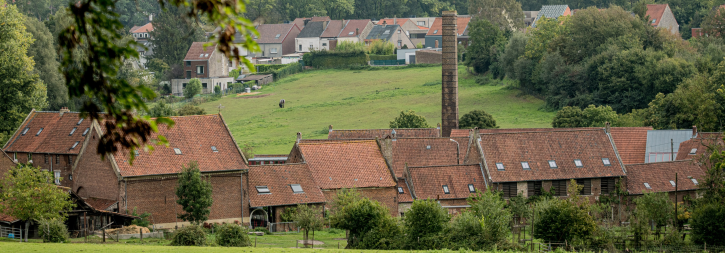
Sander will be taking us along to the region he was born and raised in, the Zenne River Valley.
He discovered his fascination with nature as a boy, romping through the countryside with the Sint-Genesius-Rode scouts. And those experiences left such an impression that he ended up studying biological engineering. After graduating, he got started as a brewer at one of the world's most renowned Lambic breweries, the revered Mort Subite.
These days, however, he works for the Federal Agency for Medicines and Health Products, while volunteering as a tour guide and nature guide on the side.
Trekking into the great wide open is one of his favourite pastimes. This time around, he's sharing his favourite haunts with us as a special favour – the spots that even as a local, continue to fill him with wonder.
Kegelfeesten (Alsemberg)
Every June, if you happen to be in Alsemberg – Elsemheide to be specific – you can join a great game of skittles during the Kegelfeesten. For the Flemish version of skittles, the goal is to bowl an iron ball down a wooden alley and knock down as many skittles (or bowling pins) as possible. Each player gets three shots, and the winner goes home with a scrummy bottle of Geuze. It’s also the place to be for typical regional dishes, such as a sandwich with quark, thinly sliced radish, and chopped scallions. It's a guaranteed good time!
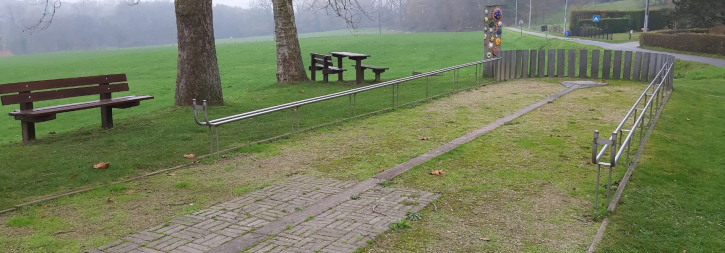
Location: on the corner of Elsemheidelaan and the J.B. Woutersstraat in Alsemberg. You’re also welcome to request to borrow a set of skittles for the day.
The Blue Forest – Wood anemones (Halle)
The Blue Forest is famous the world round for its violet bluebells, but if you’re clever, you'll steer clear of the crowds and visit a few weeks earlier. Why? Because that's when the wood anemones are in bloom. When that happens, the forest floor is bedecked with a magical carpet of white (& green) blossoms.
Wood anemones are solitary plants that take their time growing, creeping across the forest floor at a leisurely pace. And that's precisely what makes the Blue Forest such a find, because there are so, so many of them! What should you remember though? Never walk through the flowers, not even on patches without any growth. Footsteps compress the soil and prevent this mercurial plant from flourishing. The rule? Please stay on the beaten path.
Bluebells and wood anemones are both spring perennials. That means you’ll find them peeking through the earth and blooming before the trees have even gotten their leaves. In fact, that’s what allows them to soak up the sunbeams splashing the forest floor below with light.
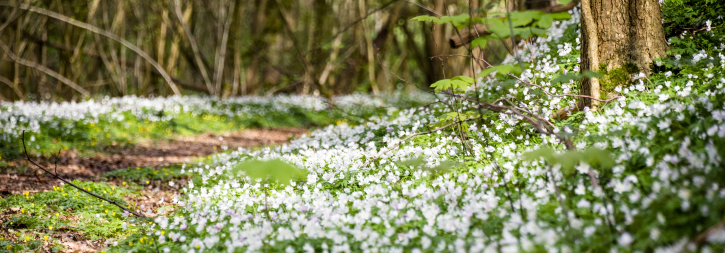
Sunken paths
The Zenne River Valley is hill country, often granting you marvellous views from the hilltops, but also seducing you with its many romantic and mysterious sunken paths. Sunken paths are roads carved out of the landscape through centuries of use. Some of them have been traversed on foot or by horse and carriage since the Middle Ages, with a few even dating back to the Roman Empire.
Because they are often situated deeper in the landscape, sunken paths frequently feature microclimates friendly to, for example, all kinds of shade-loving plants, as well as animals that seek shelter there or use the path as a connecting road.
Wonderful walks to explore these treasures include the Wijnbronbeek Walk in Linkebeek and the Herisem Walk in Beersel.
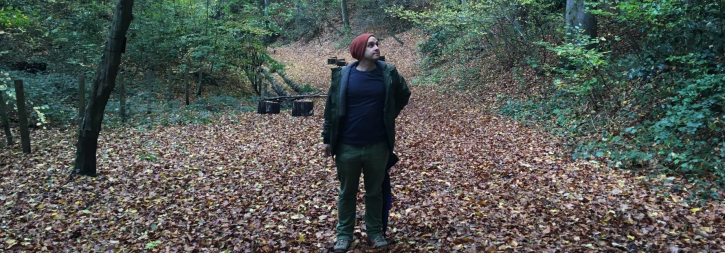
The Sonian Forest (Sint-Genesius-Rode
The Sonian Forest is Belgium’s sole UNESCO Natural World Heritage site due to its cathedral of two-hundred-year-old, towering beeches.
The forest is also dripping with history, from Emperor Charles V who would visit the grounds of the Groenendaal Priory to hunt and to pray to the remains of trenches, ammunition depots and towers from both World Wars and King Leopold II's royal racecourse. In my opinion, the most gorgeous part of the Sonian Forest is the Joseph Zwaenepoel forest reserve, with the Majestic Oak Walk running through it.
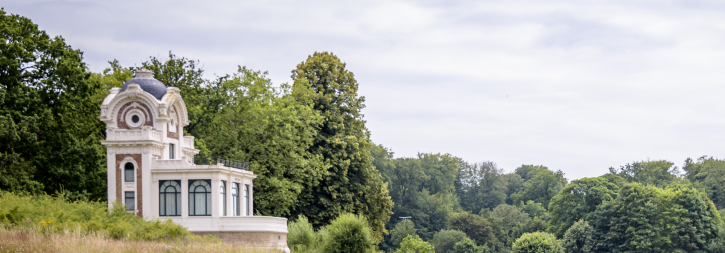
Discover Geuze breweries and the paper industry of days gone by
Geuze is occasionally referred to as the Champaign of Brussels, but from where I stand, Geuze is actually a cut above (that could be a career quirk, of course)!
It’s beer produced through spontaneous fermentation, with a yeast native solely to the region of the Zenne River Valley. In reality, Geuze is a blend of Lambic beers, matured in wooden barrels from a few months to several years. These Lambic beers are blended and fermented a second time in the bottle to create Geuze. While the region continues to pump out abundant streams of Geuze, its paper industry is a relic of the region's former glory.
However, stopping in Dworp, you can still find what was once a booming paper and cardboard factory, Herisem Mill. I think it's a fascinating spot to observe how a former paper mill continues to operate while taking on a few additional contemporary roles. For example, it’s also a restaurant and a popular spot for youth camps. The Geuze breweries and blenderies are within walking distance of the Herisem Mill and pair perfectly with a walk featuring, for instance, Beersel Castle, the 13th century Church of Alsemberg, and the old town hall on the Rondebos domain.
